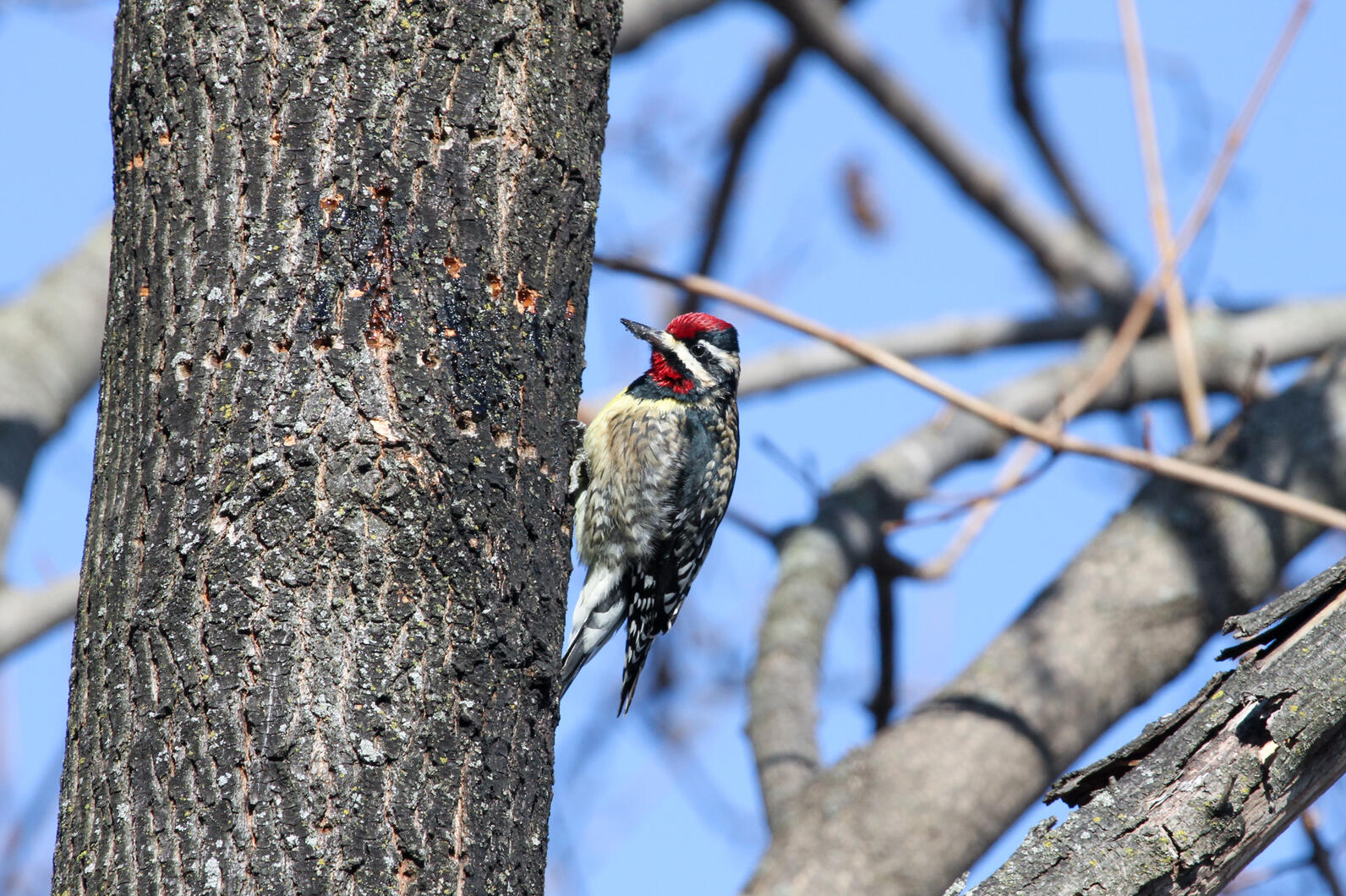I write this having come home from a wonderful morning bathing in the avian chorus of spring migration. Amidst these little jewels of spring, it is strange to think back to the maple sugaring season; a time of warm days and cold nights, of forests covered in snow and branches bare to the wind with nary a warbler in sight. With the arrival of spring migrants and the trees already leafed out, the sugaring season seems long behind us. And yet, for some sugarmakers, the end of the sugaring season is little over a month gone. As a graduate student at the University of Vermont studying the impacts of maple sugaring on forests and forest bird communities in collaboration with Audubon Vermont and Vermont Center for Ecostudies, now is the time of year when my research sends me to the sugarwoods just as sugarmakers are (hopefully) getting some well-earned rest. With tapping by human sugarmakers behind us, I prepare to search for Yellow-bellied Sapsuckers tapping their own sap wells and listen for the tap-tap-tap sound of woodpeckers foraging for insects along sugar maple trunks. It is a beautiful time to be in the sugarwoods, when our forests are nurseries producing baby birds rather than sap. But as a graduate student with no sugarmaking experience, my relationship with Vermont’s sugarwoods was a fair-weather one. And until recently, my experience of sugarmaking had been – in a literal sense – purely academic.

This season, I was grateful to get more hands-on experience in the sugarwoods during the sugaring season and develop a personal relationship with this Vermont tradition. At the start of the season in early March, I learned the proper technique for tapping trees from the (very patient) Audubon Vermont staff. Later, I worked with Center Director Kim Guertin in preparation for Audubon’s Sugar on Snow party and open house weekend. Sugar on Snow parties and maple open house weekends are hosted all over Vermont during the sugaring season. These gatherings allow community members to connect with each other and with local producers while learning about the time-honored tradition of maple sugaring. Personally, the weekend was a wonderful opportunity to experience the human aspect of a tradition I had only witnessed from a birds-eye view. While tasting grades of maple syrup, visitors learned how the taste of syrup can change throughout the season and what habitat features different birds need within the sugarwoods. Friends reconnected while sampling the famed sugar on snow dessert (in which hot maple syrup is poured onto snow or shaved ice to form a sort of sticky candy-like substance) with a side of dill pickle – a crucial element of the dish, or so I have been told. Over the course of the weekend – more than 1,300 people visited the sugarbush at the Green Mountain Audubon Center. Thanks to Audubon staff and the help of more than 20 volunteers, the event was a smashing success, with 80 dozen donuts consumed, 15 gallons of syrup boiled for sugar on snow, and 200 Lake Champlain chocolate bars awarded to those lucky and diligent enough to find the “golden tap”. It was a weekend marked by joy and community, tradition and education, cold weather and warm drinks. As I head out to count birds this summer, I’m grateful for the experience of Sugar on Snow that has given a deeper meaning to my graduate work, strengthening my connection to Vermont’s sugarwoods and the people that steward them. The sweetness maple syrup tapped from these woods is matched only by the sweetness of its forest birdsong. How lucky I am that I get to experience both!
Written by, Liza Morse




